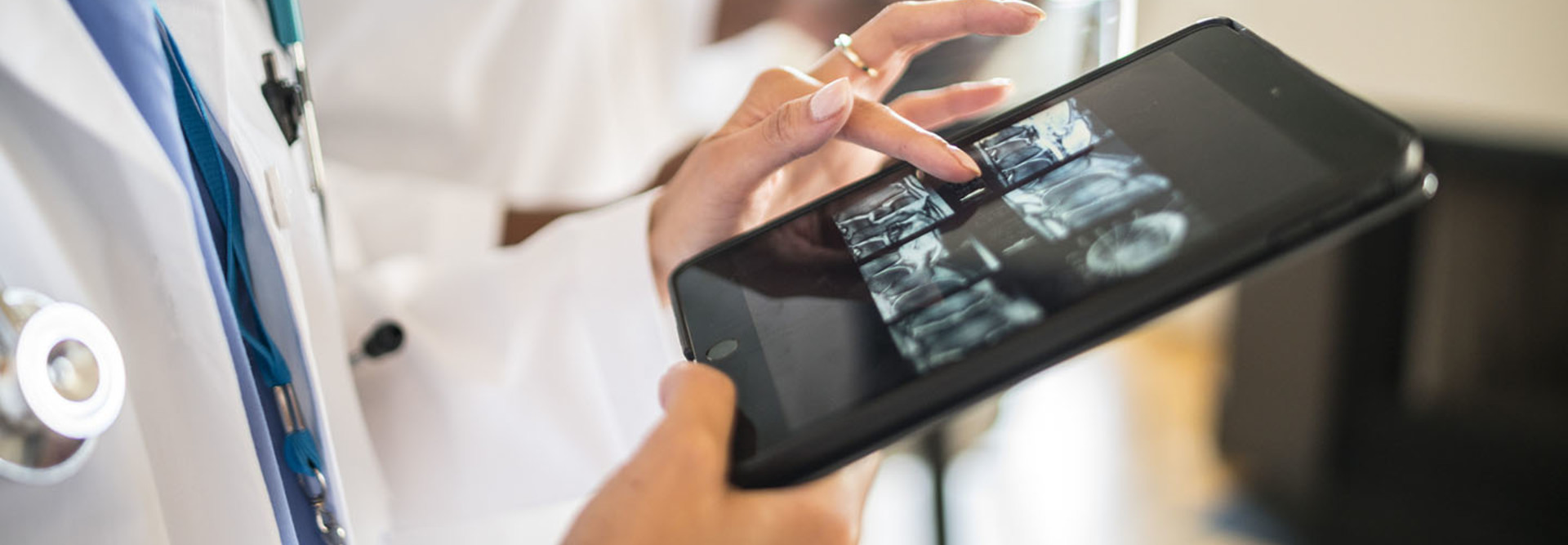5 Types of Medical Imaging Impacted by 3D Medical Visualization
1. Cinematic Rendering Offers a Clearer Picture of Complex Structures
As doctors seek to study complex regions of the body, such as the heart, a new technology known as cinematic rendering can help.
Developed by Dr. Eliot Fishman, director of diagnostic imaging and body CT and professor of radiology and radiology science at Johns Hopkins Medicine, the technology produces photorealistic images by merging 3D CT or 3D MRI scans with volumetric visualization as well as other computer-generated imagery technology. It aids doctors when diagnosing illnesses, navigating through surgery and planning treatment. Cinematic rendering allows healthcare professionals to see much more of the texture of the anatomy.
Much like how ray tracing makes a person’s skin look more real and porous in the movies, cinematic rendering provides a better look at the texture of tumors, which can provide more information for doctors to determine whether or not a tumor is cancerous.
“With those textures, the more accurately we can render and visualize them as humans — the texture of the anatomy or the tumor — I think the richer the information for doctors to interpret,” Powell says.
2. Tomosynthesis Improves Breast Cancer Detection
Breast imaging has advanced from traditional 2D mammography to 3D tomosynthesis (sometimes referred to as 3D mammography), which allows radiologists to capture images at multiple angles and display tissues at varying depths rather than a single set of images. It can allow radiologists to see things more clearly in a 3D data set, Harris notes.
“Tomosynthesis has been shown to improve the care for breast cancer detection and is more sensitive, particularly in patients at high risk or with dense breasts,” Harris explains. “It helps to differentiate things that might be misinterpreted that are potentially other artifacts. It's been a big improvement over 2D mammography.”
3. Artificial Intelligence Takes Medical Imaging to the Next Level
The last five years have brought significant advancements in imaging, thanks to the powerful combination of artificial intelligence and 3D medical imaging. At the GPU Technology Conference in March, Nvidia introduced Project Clara, a “virtual medical AI supercomputer” that offers accelerated computing capability and can handle 3D volumetric rendering, according to Powell.
AI could inject efficiency into medical imaging, particularly when it comes to detecting organs or anomalies. For example, by combining image visualization and AI, cardiologists can measure ejection fraction — the percentage of blood pumped through the heart each time it contracts — in a much shorter period of time without having to sort through massive data sets and examine the anatomy by sight.
“Oftentimes cardiologists and radiologists have experience, so they just notionally know what's going on, but AI is able to give an accurate, hard-number measurement to really increase the chances that the diagnosis is as good as it can be,” Powell says.
4. 3D Computing Tomography Angiography Maps Vascular Anomalies
At Massachusetts General Hospital, Harris is leading an effort in 3D computed tomography angiography (CTA), in which medical professionals can visualize arterial and venous vessels via a CT technique. Harris and his team use CTA to map stenoses, aneurysms, dissections and other vascular anomalies.
In conjunction with 3D imaging, medical professionals can get a better sense of what they’re viewing in anatomy and pathology, as well as any potential artifacts.
“Where CTA scans may have hundreds of cross-sectional images, our 3D technologists can succinctly summarize a small set of 3D images for the case so radiologists and referring physicians can read it efficiently without having to do all the processing themselves,” Harris says. “The radiologist can then focus on clinical work, research and teaching.”
Moreover, although MRIs and CT scans start out as 2D, they can be transformed into 3D through manipulation in 3D software, Harris explains. “It's not 3D by default, but you can take a stack of 2D data sets and manipulate it in 3D in a variety of different ways,” he says.
5. 3D Ultrasound Simplifies the Imaging Process
With 3D ultrasound, ultrasonographers use a probe to examine a patient’s anatomy. They capture 3D image sweeps in addition to key snapshots and send the images to a 3D workstation. A 3D ultrasound technologist then reviews the images and creates additional 3D views before they go to the radiologist.
“The technologist will see whether the sonographer has captured the entire anatomy with the scan, if there's poor image quality or if they have missed anything,” Harris says. “They can have the ultrasonographer update the scan if necessary.”
Prior to 3D ultrasound, radiologists would have to physically go to each scan and check the patient, because once the patient left, no additional images could be acquired. If there were later questions, the patient would be called back for rescanning, for which radiology wouldn’t be reimbursed, according to Harris.
In 2003, Harris and his team began using an attachment for the probe that takes a “smooth sweep of the anatomy” and reconstructs the information as a 3D data set.
“If there's something in the snapshots they don't see clearly, we can reconstruct additional views from the raw data without having to call the patient back,” Harris says. Not only does this process improve efficiency for radiologists, ultrasonographers and patients, it also introduces flexibility into the process, as ultrasound exams can now be acquired during off hours and at satellite imaging sites.
The Future of Medical Imaging: AI, Cloud and Beyond
While medical sensors have played a key role in imaging in the last two decades, future approaches will revolve around computation and more-intensive compute power. Computation and AI make image gathering more efficient and shorten image acquisition times. In addition, the field will likely see more cloud-hosted medical imaging data.
“We're seeing a lot more movement toward cloud-hosted applications and technology using compute servers and more-intensive compute power that can be hosted remotely,” Harris says, adding that he would like to see AI algorithms cut down imagine processing time as well.
“We're looking at trying to replace some of that time-intensive work with a better segmentation that will allow us to produce the results in less time,” Harris says. “We have some cases that take us one to two hours, and if we can cut that time in half using advanced algorithms, that would be really great.”
In addition, AI will help radiologists spot images they would not be able to see with the human eye.
“There's a tremendous amount of data in the images that is currently lost because the human eye can't process it,” Harris says. “With the help of AI, there's a tremendous amount of information that could be gleaned quantitatively from that data and presented to the radiologist and referring physicians to help with diagnosis and treatment planning.”
With technologies like 3D medical imaging and artificial intelligence at doctors’ disposal, Powell thinks medical professionals can become “superhuman.”
“It's a brand-new tool in their toolbox,” she says of 3D imaging. “It has some really incredible superpowers.”









